
Procedural
Requirements
Effective Date: March 29, 2019
Expiration Date: December 31, 2024

|
NASA Procedural Requirements |
NPR 1400.1H Effective Date: March 29, 2019 Expiration Date: December 31, 2024 |
| | TOC | ChangeLog | Preface | Chapter1 | Chapter2 | Chapter3 | Chapter4 | Chapter5 | AppendixA | AppendixB | AppendixC | AppendixD | AppendixE | AppendixF | ALL | |
3.1.1 Responsible Offices shall use the following criteria, along with Table 3 when writing requirements statements in NASA directives:
a. Identify all requirements statements by using the term “shall” to denote mandatory compliance.
b. Designate at least one official (by position title) or organization or office title as responsible and accountable for development, implementation, maintenance, and/or verification of the requirement set forth in the “shall” statement.
c. Identify what action should be accomplished or what product should be provided to demonstrate compliance with the requirement.
d. Identify specific requirements, not general responsibilities with broad application.
e. Provide a description of how requirements will be measured/verified in the measurement/verification section of the directive.
f. Separately state each individual requirement statement (i.e., one “shall” statement per single paragraph and one “shall” statement per paragraph with subparagraphs).
Table 3. Use of the Term "Shall"
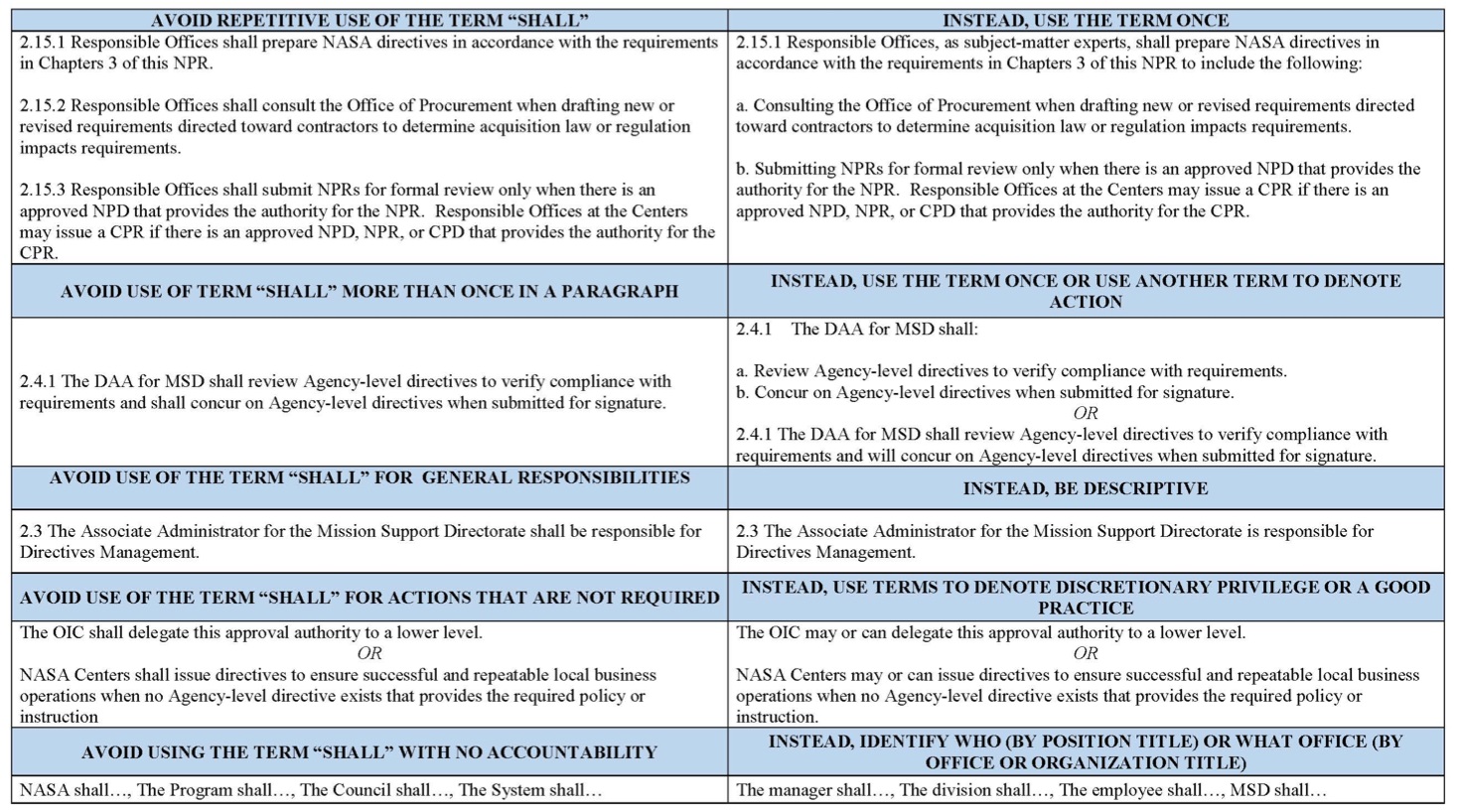
Note: Each requirement should state any applicable timing for performance, delivery of a product, or completion of the requirement with a specific event or a general flow in a process.
g. Exclude replication of existing internal or external policy statements, procedural requirements, responsibilities, or text from other documents. However, paraphrasing or cross-referencing may be used to summarize information in a way that is significantly different from the original text (i.e., responsible office’s own words). NASA directives may supplement, clarify, or make more stringent external requirements or designate who is responsible for implementation of external requirements.
h. Exclude technical requirements in NASA directives. Technical requirements may be included in NASA technical standards, then cited in NASA directives. See Appendix A for the definition of technical requirements.
Responsible Offices shall use official position titles or office titles as described in paragraph 3.1.1b for consistency when assigning or documenting responsibilities in Agency-level directives. Responsibility statements in NPDs can be written as requirements using “shall” statements only when there are no corresponding NPRs that describe specific requirements or where requirements can be placed.
3.3.1 NASA directives have three types of document citations: authority documents, applicable documents and forms, and references. Responsible Offices shall cite these documents according to their purpose as follows:
a. Authority document citations list the higher level document(s) that authorize establishing the policy or requirements contained in the directive. Authority documents can be cited in the text of directives in order to provide the context, as determined by the Responsible Office.
b. Applicable documents and forms citations consist of documents and forms incorporated by reference in the text of the directive, contain provisions or other pertinent requirements directly related to and necessary for the performance of the activities specified by the directive, and use only controlled and current forms. See NPD 1420.1, NASA Forms Management.
(1) Cite all applicable documents and forms listed in paragraph 4 (for NPDs/CPDs) or paragraph P.4 (for NPRs/CPRs) at least once within the text of the directive. Use statements to introduce applicable documents and forms (e.g., as required by, according to, under, or per).
(2) Conversely, list all applicable documents and forms cited within the text of the directive in paragraph 4 (for NPDs/CPDs) or paragraph P.4 (for NPRs/CPRs).
c. References are documents that may be cited in the text of the directive, but do not constitute requirements to perform activities in the directive. These documents may consist of internal and external requirements and other resources considered to be useful as background information for the reader (to help in understanding the subject-matter).
(1) If citing reference documents listed in an NPD’s and CPD’s attachment or NPR’s and CPR’s appendix, cite at least once in the text of the directive. Use statements to introduce reference documents (e.g., additional information on this subject is available at/in…, for additional information, see…).
(2) Conversely, list reference documents cited in the text of a directive in an NPD’s or CPD’s attachment or NPR’s or CPR’s appendix.
3.3.2 Within each document citation list, Responsible Offices shall:
a. List document citations in the following order: United States Code, Public Law, Executive Orders, Code of Federal Regulations, Federal Register Notices, Office of Management and Budget Circulars, NPDs, NPRs, NIDs, NCs, CPDs, CPRs, CIDs, NASA Technical Standards, NASA Forms, non-NASA Government standards, and other documents.
b. List numbered documents in numerical order first and non-numbered documents in alphabetical order second within each category. See section P.4 for example of listing order.
c. List document and form citations using the following format:
(1) United States Code (Statutes) – National Aeronautics and Space Act, 51 U.S.C. § 20113 (a).
(2) Public Laws (Official Session Laws, Laws made prior to codification in the U.S. Code) – White House Conference on the Arts Act of 1990, Pub. L. 101-509, 104 Stat. 1427 (1990).
Note: The Public law is only cited when not codified in the U.S.C. (if codified, cite to the U.S.C.), or when several sections are spread throughout the U.S.C. and it is too cumbersome to cite to all the U.S.C. sections.
(3) Executive Orders (Signed by the President) – Regulatory Planning and Review, E. O. 12866, 3 CFR pt. 638 (1993).
Note: Executive Orders include the Order’s title, number, and the citation for the location of the Order in 3 CFR.
(4) Code of Federal Regulations (Agency Regulations) – National Space Grant College and Fellowship Program, 14 CFR pt. 1259.
Note: Whole numbers in the CFR refer to a “part” (e.g., pt. 1259) of the CFR; sections (§) consist of a decimal number which includes the part number and the section number within the part; e.g., §1259.102.
(5) Federal Register Notices (Published in the Federal Register) – Environmental statements or availability, 71 FR 67389 (Nov. 21, 2006).
Note: Citation includes the two-digit volume number, the acronym “FR,” the page number and date the notice published.
(6) Office of Management and Budget Circulars (Generated by OMB) – OMB Circular A-19, Legislative Coordination and Clearance (09/20/1979).
(7) NASA Policy Directives – NPD 1400.1, Documentation and Promulgation of NASA Internal Requirements.
(8) NASA Procedural Requirements – NPR 1400.1, NASA Directives and Charters Procedural Requirements.
(9) NASA Interim Directives – NID 8000.104, Acquisition of Administrative Office Space.
(10) NASA Charters – NC 1000.33, Partnership Council.
(11) NASA Technical Standards – NASA-STD-8709.2, NASA Safety and Mission Assurance Roles and Responsibilities for Expendable Launch Vehicle Services.
(12) NASA Forms – NHQ Form 184, NASA Directive Request Summary.
Note: For documents listed in paragraphs 3.3.2c(1)-(5), the name appears first and the citation location appears second. For documents listed in paragraphs 3.3.2c(6)-(12), the document type and number appears first and the name appears second.
d. Cite documents and forms ciations using the following format:
(1) Use the document name and citation location, but exclude the name after first use when citing within the text of directives for documents described in paragraphs 3.3.2c(1)-(5) (e.g., First use: The National Aeronautics and Space Act, 51 U.S.C. § 20113 (a) - Second use: 51 U.S.C. § 20113 (a)).
(2) Use the document type, number, and name, but exclude the name after first use when citing within the text of directives for citations described in paragraphs 3.3.2c(6)-(12) (e.g., First use: NPR 1400.1, NASA Directives and Charters Procedural Requirements - Second use: NPR 1400.1).
e. Exclude the revision letter designation and change numbers when citing or listing NASA directives or charters within NASA directives or charters (see Figure 3-1).
Note: This requirement is applicable only when citing or listing NASA directives and charters in NASA directives and charters. In NASA directives and charters, the current published version is what is referred to when a NASA directive or charter is cited. For other types of documents, citing the revision letter of the directive or charter may be appropriate. Refer to the writing instructions for the type of document you are preparing, if more information is needed.
f. Ensure that documents and forms cited in the directive are approved documents that are available to the reader.
g. Include a document’s title and URL in a footnote if it is not a Federal statute or regulation, a NASA directive, or is not available in the NASA Technical Standards System to show readers precisely where to find the cited document.
h. Refer to one or more of the following resources to ensure that citations are current and accurate:
(1) United States Code Citations: http://uscode.house.gov.
(2) Public Laws citations: http://uscode.house.gov/popularnames/popularnames.htm.
(3) Executive Order citations:
(a) Title 3 on GPO Access: http://www.gpo.gov/fdsys/.
(b) Office of the Federal Register: https://www.archives.gov/federal-register.
(4) Code of Federal Regulations citations: https://www.ecfr.gov/cgi-bin/ECFR?page=browse.
(5) NASA Directives: http://nodis3.gsfc.nasa.gov/.
(6) NASA Standards: https://standards.nasa.gov/.
(7) NASA Forms: https://itcdweb.hq.nasa.gov/eforms.
i. Use the following abbreviations for citations described in paragraphs 3.3.2b(1)-(5):
(1) United States Code – U.S.C.
(2) Federal Register – FR.
(3) Code of Federal Regulations – CFR.
(4) Part – pt., Parts – pts.
(5) Subpart – subpt., Subparts – subpts.
(6) Appendix – app.
(7) Chapter – ch., Chapters – chs.
(8) Subchapter – subch. Subchapters – subchs.
(9) Section – §, Sections – §§
(10) Section – sec.
Note: The word “section” instead of the symbol is used when it is the first word in a sentence. The word is also used in the text of the body and footnotes of law reviews and other documents except when referring to the U.S. Code. Otherwise, the symbol is used. (e.g., The National Aeronautics and Space Act, 51 U.S.C. § 20113 (a)).
(11) Executive Order – E.O.
(12) Public Law – Pub. L.
3.4.1 NASA Directives Numbering Scheme
3.4.1.1 The NASA directives numbering scheme is composed of six elements that create a unique identifier. The six elements are: one or two letters indicating Agency-level or NASA Center, two letters indicating the NASA directive type, four numbers indicating the subject category, a separator (period), the NASA directive serial number, and letter(s) indicating the revision level designation (see Figure 3-1).
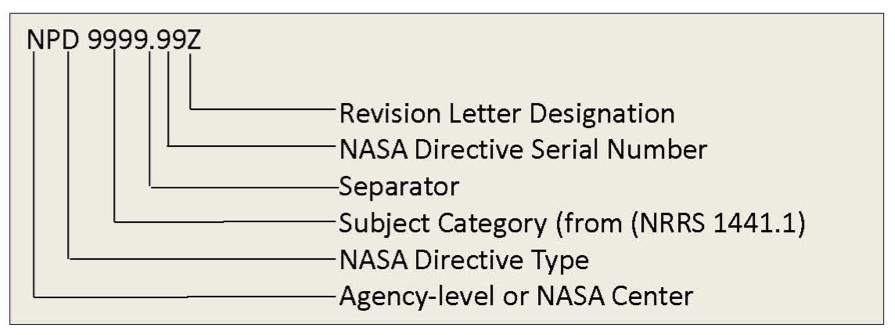
Figure 3-1. NASA Directives Numbering Scheme
Note: The full directive number is included in the file name and masthead section of draft and final directives.
3.4.1.2 The subject category numbers used to classify NASA directives are the same subject categories found in NPR 1441.1. The serial numbers are automatically generated when the directive is approved.
3.4.1.3 For Agency-level directives, the Office of the Executive Secretariat (OES), Directives Management Team (DMT) works with the Responsible Office to ensure that directives numbers are assigned under NPR 1441.1.
3.4.1.4 For Center-level directives, the Center DM works with the Responsible Office to ensure that directives numbers are assigned under NPR 1441.1.
3.4.2 Effective and Expiration Dates for NASA directives
3.4.2.1 A NASA directive takes effect on the date that it is signed by the approving official.
3.4.2.2 NPDs, NPRs, CPDs, and CPRs expire five years after signature or revalidation.
a. NPDs and NPRs are removed from the NODIS Library upon expiration by OES DMT, unless an NPD or NPR replacing the directive being removed is submitted for revalidation or for review and approval, or an extension is requested. See requirements for requesting extensions in Chapter 5.
b. CPDs and CPRs are removed from the Center directives library upon expiration by the Center’s DM, unless a CPD or CPR revising the directive is submitted for revalidation, review and approval, or an extension is requested under the Center’s established process.
3.4.2.3 NIDs and CIDs expire on the effective date of the permanent directive or 12 months after the effective date of the interim directive, whichever is earlier.
a. NIDs are removed from the NODIS Library upon expiration by the OES DMT, unless an NPD or NPR replacing the NID is submitted for review and approval or the Responsible Office requests an extension via a waiver, or choses to revise it. NIDs may be revised once. See requirements for issuing NIDs in this chapter and Chapter 4 and requesting waivers in Chapter 5.
b. CIDs are removed from the Center Directives Library upon expiration, unless a CPD or CPR replacing the CID is submitted for review and approval, under the Center’s established process.
Note: See process requirements for issuing interim directives in Chapter 5.
3.5.1 Responsible Offices shall apply the following format and writing style rules:
a. Format Styles:
(1) Use page numbers (e.g., 1, 2, 3) in NPRs, but exclude page numbers from the table of contents.
(2) Align all text along the left margin (i.e., left justify or flush left).
(3) Indent and italicize notes.
(4) Bold chapter, appendix, and second-level paragraph section headings and include a period after each chapter number, appendix letter, and figure and table numbers and letters as follows:
(a) For NPDs:
(i) 1. [Title].
(ii) Attachment A. [Title].
(iii) Figure 1. [Title] or Table 1. [Title] in Sections.
(iv) Figure A. [Title] or Table A. [Title] in Attachments.
(b) For NPRs:
(i) Chapter 1. [Title].
(ii) Appendix A. [Title].
(iii) 1.1 [Title].
(iv) Figure 1. [Title] or Table 1. [Title] in Chapters.
(v) Figure A. [Title] or Table A. [Title] in Appendices.
(5) Center figures and tables.
(a) Number all figures and tables (e.g., Figure 1. or Table 1.) placed in chapters using the number of the chapter. Add the figure number and title at the bottom of the figure and add the table number and title at the top of the table. If there is more than one figure or table in a chapter, add a dash and an additional number to indicate that it is the first, second, or third figure or table (e.g., Figure 1-1, 1-2, 1-3, or Table 1-1, 1-2, 1-3, etc.).
(b) Letter all figures and tables (e.g., Figure A. or Table A.) placed in appendices using the letter of the appendix. Add the figure letter and title at the bottom of the figure and add the table letter and title at the top of the table. If there is more than one figure or table in the appendix, add a dash and a number to indicate that it is the first, second, or third table (e.g., Figure A-1, A-2, A-3 or Table A-1, A-2, A-3, etc.).
(6) Number/letter all paragraphs. If there is not a second paragraph immediately following at the same level or no subparagraphs, do not number/letter the paragraph. Exclude periods behind numbered paragraphs (e.g., use 3.5.1 or 3.5.1h, not 3.5.1. or 3.5.1.h.), but include periods behind lettered paragraphs (e.g., use i., not i).
b. Writing Styles:
(1) Use NPR 1450.10 to supplement the style requirements in this NPR.
(2) Exclude caveat phrases, ambiguous terms, and vague terms (e.g., “as applicable,” “as appropriate,” “whenever possible,” “as soon as possible,” “in a timely manner,” “etc.”) within requirements statements.
(3) Use the correct term (e.g., “shall,” “may or can,” “should,” “will,” and “are/is”) to denote action or other forms of action. See paragraph P.2b.
Note: Adherence to paragraphs 3.5.1a(1)-(5) is under the discretion of the Center official responsible for the format styles for Center-level directives.
3.6.1 NPDs and CPDs document Agency- and Center-level policy statements, assignment of responsibilities for policy implementation, delegations of authority, approach for verification of compliance with the NPD or CPD, and the Administrator’s, or designee’s, approval.
3.6.2 Responsible Offices shall ensure that NPDs and CPDs are no more than five pages, excluding attachments, and contain the following content and structure of elements:
a. Masthead: Directive Number, Effective Date, Expiration Date, Responsible Office, and Subject: (Title).
b. Change Log that describes administrative changes to an NPD or CPD and the approved date changes.
Note: A Change Log can be added when the NPD or CPD is developed or added after the NPD or CPD is revised.
c. Body consisting of the following eight required paragraphs:
(1) Paragraph 1, Policy provides a general statement of the principles, fundamental values, and general direction of the Agency or Center that is used to determine present and future decisions. Policy statements do not contain requirements "shall" statements and are introduced (e.g., "It is NASA Policy to" or "This directive establishes policy for").
(2) Paragraph 2, Applicability provides the scope of the required application of the NPD or CPD. Include the following applicability statements:
(a) "This directive is applicable to NASA Headquarters and NASA Centers, including Component Facilities and Technical and Service Support Centers."
(b)If the directive applies to Jet Propulsion Laboratory (JPL), a Federally Funded Research and Development Center (FFRDC), include this statement, "This directive is applicable to the Jet Propulsion Laboratory, a Federally Funded Research and Development Center (FFRDC), only to the extent specified in the NASA/Caltech Prime Contract." If the directive does not apply to JPL, an FFRDC, remove the applicability statement referencing JPL, an FFRDC, if mentioned.
Note 1: A directive does not apply to JPL, an FFRDC, unless it is on the Listing of the NASA Directives and Standards in the NASA/Caltech (JPL) Prime Contract and has been incorporated into the NASA/Caltech Prime Contract.
Note 2: JPL, an FFRDC, may review new and revised directives even if they are not in the NASA/Caltech Prime Contract, and provide comments or no comments as deemed necessary. However, inherently governmental directives are usually not reviewed by JPL since they only apply to the government.
(c) If the directive applies to other contractors, recipients of grants or cooperative agreements, or parties to other agreements, include this statement, "This directive is applicable to other contractors, recipients of grants or cooperative agreements, or parties to other agreements only to the extent specified in contracts, grants or cooperative agreement, or other agreements."
Note 1: Only list the type of document (i.e., contract, grant, or agreement) to which the directive applies. For example, if the directive is not applicable to a "grant," only list "contract or agreement" to indicate the directive's applicability.
Note 2: This statement alone is not sufficient to stipulate requirements for the contractor or recipient of the grant. Requirements can be delineated by adding a note after the requirements' paragraph. See paragraphs 2.16.2 or 2.19.3 for examples of delineating requirements between civil servants and contractors or recipients of grants.
(d) For CPDs, include a statement similar to 3.6.2c(2)(a) above to ensure applicability at the Center and associated facilities.
(e) For NPDs and CPDs, include a statement that describes terms that denote action. See paragraph P.2b.
(f) For NPDs and CPDs, include a statement that describes document citations are assumed to be the latest version. See paragraph P.2h.
(3) Paragraph 3, Authority contains a list of the NPD or CPD and external authority(ies) or requirements that justify establishing the NPD or CPD. This latter category includes only those external sources that are the authority for the NPD or CPD. Place all other external sources in the Applicable Documents and Forms or References sections.
(4) Paragraph 4, Applicable Documents and Forms – contains a list of documents and forms cited in the body of the directive that contains provisions or other pertinent requirements directly related and necessary to the performance of the activities specified by the directive.
(5) Paragraph 5, Responsibility is an explanation of who (by position or organization) is responsible for implementing the policy stated in the NPD or CPD. Write responsibility statements in accordance with paragraph 3.2, and avoid dictating how an organizational leader is to organize or assign responsibilities within the leader’s organization.
(6) Paragraph 6, Delegation of Authority is reserved for direct delegation from the Administrator, Official-in-Charge, or Center Director to a specific position (e.g., Agency Regulatory Policy Officer).
(7) Paragraph 7, Measurement/Verification is an explanation of how compliance with requirements will be measured. Specify the information that is needed to support senior management’s evaluation of performance for compliance and implementation. Where quantitative evaluation is possible, identify what data is to be collected, who collects the data, and who receives the data for evaluation. Cross-reference measurement/verification data that responds to externally imposed requirements to provide traceability to those requirements, for example, Government Performance and Results Act reporting requirements. “Shall” statements are not included in this section.
Note: This information may be presented as text within the paragraph, as a verification matrix, as an attachment to the NPD or CPD that includes details of data and report of data; such as formats and timelines; or as a citation to an NPD, CPD, or another requirements document.
(8) Paragraph 8, Cancellation contains a list of directives that will be cancelled upon issuance. If the issuance cancels one or more directives, cite the Directive Number(s), Title(s), and Effective Date(s). If the issuance does not cancel a directive, state “None.”
Note: Governing NPDs may be waived from content and structure requirements. See process for requirements for requesting waivers in Chapter 5.
d. Signature Block for the approving official’s signature.
e. Attachments contain supplementary material related to the main text in the NPD or CPD (e.g., definitions, acronyms, verification matrices, etc.) that are attached at the end.
(1) Ensure that attachments do not contain requirements (“shall” statements) for civil service employees, only supporting information for the NPD or CPD.
(2) Number paragraphs in attachments using the letter of the attachment (e.g., A.1, A.2), excluding attachments containing acronyms and definitions.
(3) Document any definitions for words and phrases used in the NPD or CPD in Attachment A.
(a) List the definitions in alphabetical order.
(b) Provide only definitions for terms used in the NPD or CPD and only if the definitions are different than those used in dictionaries or other standard usage.
(c) Use bullets (e.g., “●”) for definitions with extended explanations
(4) Document any acronyms used in the NPD or CPD in Attachment B and list in alphabetical order. To avoid blank attachments, if there are no definitions placed in Attachment A, acronyms can be placed in Attachment A only if there are no other attachments that can be placed before the acronyms.
(5) Document verification/measurement matrices used in the NPD or CPD, in Attachment C. To avoid blank attachments, if there are no definitions placed in Attachment A or acronyms placed in Attachment B, a measurement/verification matrices can be placed in either of these attachments only if there are no other attachments that can be placed before the matrices.
Note: NPD and CPD attachments may be text and/or images. Contact your local DM for instructions.
f. Graphics to illustrate information related to the directive.
g. Distribution statement (e.g., generated by NODIS or another system).
Note: If the distribution of the NPD or CPD is restricted only to NASA, include a distribution statement to identify the restrictions for release of the NPD or CPD.
h. Number/letter paragraphs using Figure 3-2.
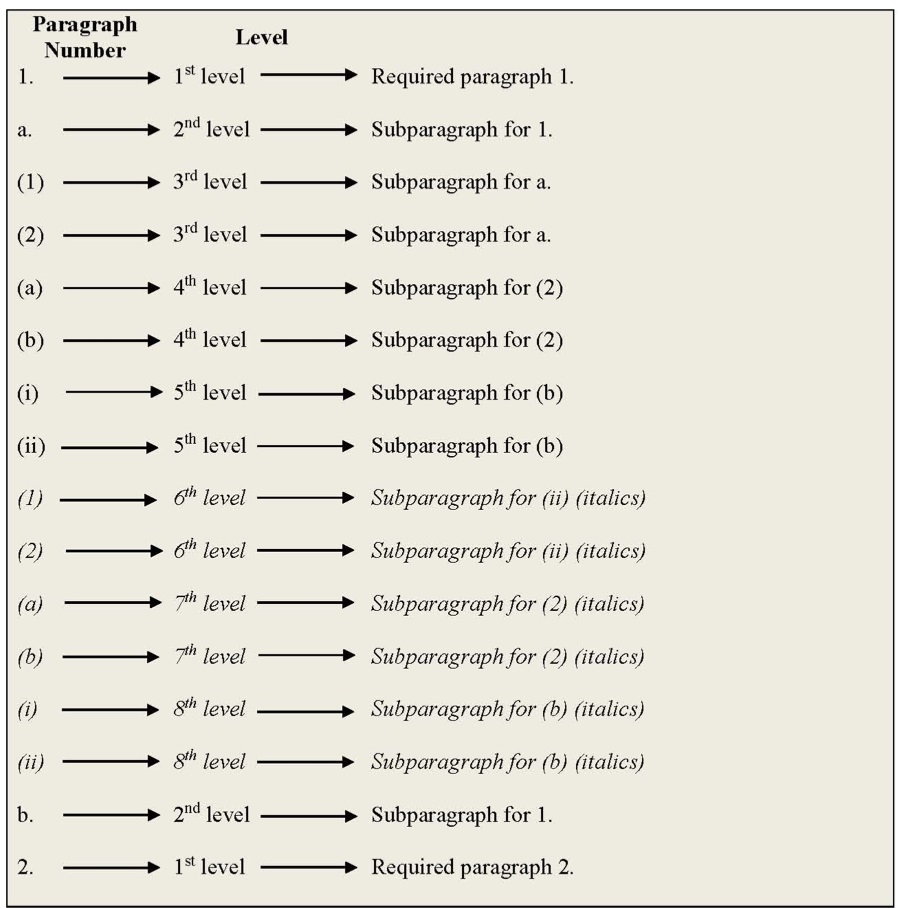
Figure 3-2. NPD and CPD Paragraph Numbering/Lettering
3.7.1 NPRs and CPRs document procedural direction for essential or otherwise mandated items only. This includes procedural requirements that are established for reasons of health, safety, security, efficiency, and effectiveness.
3.7.2 Responsible Offices shall ensure that NPRs and CPRs consists of the following content and structure elements:
a. Cover that includes the masthead with the Directive Number, Effective Date, Expiration Date, Responsible Office, and Subject: (Title).
b. Change Log. See paragraph 3.6.2b.
c. Table of Contents consisting of the preface, chapter titles, second-level paragraph titles, and appendices. Refer to this NPR’s table of contents as an example.
Note: A list of figures and tables may be included in the NPR table of contents.
(1) The preface consists of the following six required paragraphs that are numbered using Figure 3-3:
(a) Paragraph P.1, Purpose describes the rationale for establishing the NPR or CPR and what will be accomplished by implementing it.
(b) Paragraph P.2, Applicability, see paragraph 3.6.2c(2)(a)-(e).
(c) Paragraph P.3, Authority, see paragraphs 3.6.2c(3) and 3.3.1a.
(d) Paragraph P.4, Applicable Documents and Forms, see paragraphs 3.6.2c(4) and 3.3.1b(1)-(2).
(e) Paragraph P.5, Measurement/Verification, see paragraph 3.6.2c(7).
(f) Paragraph P.6, Cancellation, see paragraph 3.6.2c(8).
(g) Distribution statement, see paragraph 3.6.2g.
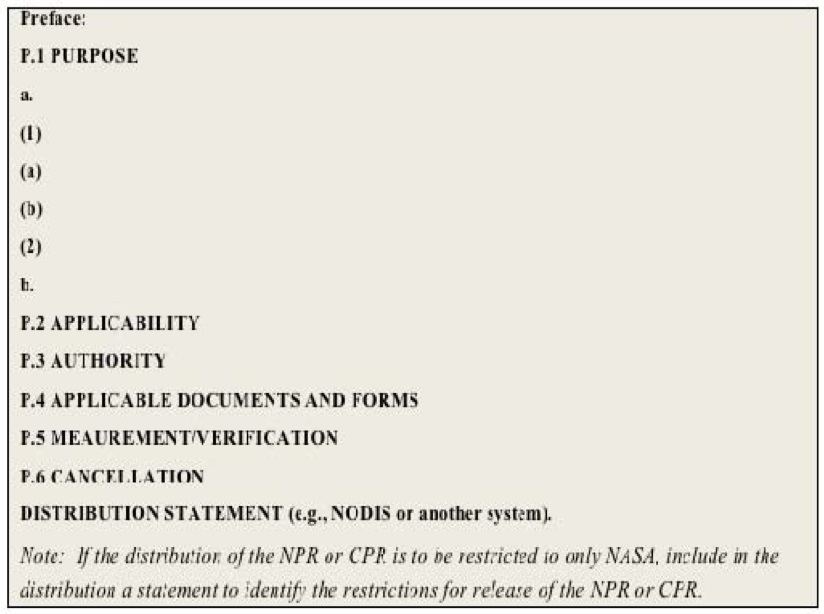
Figure 3-3. NPR or CPR Preface Paragraph Numbering/Lettering
(2) Chapters, separated by page breaks, describe the directive’s requirements and responsibilities that are subdivided into paragraphs that are numbered using Figure 3-4.
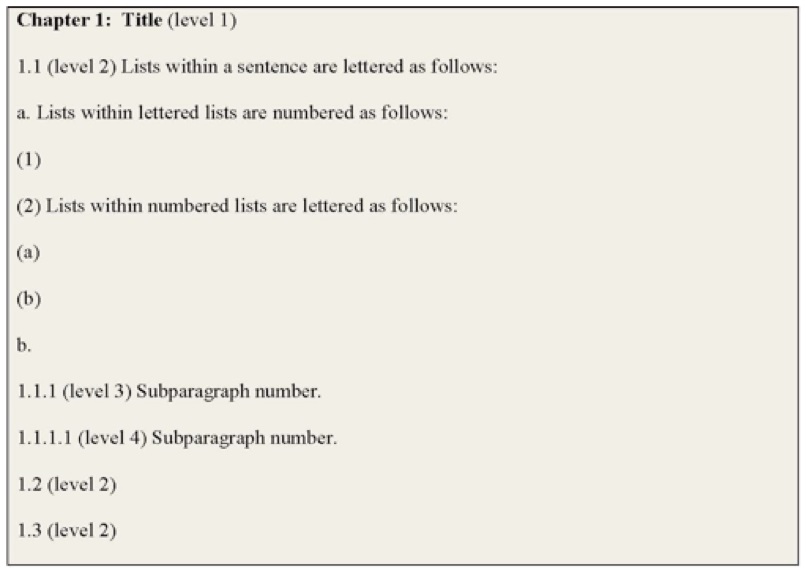
Figure 3-4 NPR or CPR Chapter Paragraph Numbering/Lettering
Note: Use Figure 3-2 if paragraphs go beyond the 4th level.
(3) Appendices, separated by page brakes, that contain supplementary material related to the main text of the NPR or CPR (e.g., contractor requirements, definitions, acronyms, verification matrices, etc.) are attached at the end.
(a) Ensure that appendices do not contain requirements (“shall” statements) for civil service employees, only supporting information for the NPR or CPR.
(b) Number paragraphs in appendices using the letter of the appendix (e.g., A.1, A.2), excluding appendices containing acronyms and definitions.
(c) Document any definitions for words and phrases used in the NPR or CPR in Appendix A.
(i) List the definitions in alphabetical order.
(ii) Provide only definitions for terms used in the NPR and only if the definitions are different than those used in dictionaries or other standard usage.
(iii) Use bullets (e.g., “●”) for definitions with extended explanations.
(d) Document any acronyms used in the NPR or CPR in Appendix B and list in alphabetical order.
Note: If there are no definitions placed in Appendix A, acronyms can be placed in Appendix A only if there are no other appendices that can be placed before the acronyms.
(e). If a verification/measurement matrix appendix is included within the NPR or CPR, include it in Appendix C.
Note 1: If there are no definitions placed in Appendix A or acronyms placed in Appendix B, measurement/verification can be placed in either of these appendices only if there are no other appendices that can be placed before the measurement/verification. See Appendix C of this NPR for examples of verification/measurement matrices.
Note 2: Governing NPRs may request a waiver from content and structure requirements. See process requirements to request waivers in Chapter 5.
Note 3: See process requirements for issuing NPDs, NPRs, CPDs, and CPRs in Chapter 4.
3.8.1 NIDs and CIDs are issued for immediate or short-term use to impose policy or requirements at the Agency or Center level and may be formatted as memorandums, directives, paragraphs, or other templates. NIDs and CIDs may be revised once, and the expiration date will be 12 months after the effective date of the revised document. Responsible offices shall ensure that NIDs or CIDs document the following:
a. Interim policy statements.
b. Assignment of interim responsibilities for policy implementation.
c. Interim requirement statements.
d. Assignment of interim responsibilities for completing requirements.
e. Applicability. See paragraph 3.6.2c(2)(a)-(d).
Note: See process requirements for issuing NIDs and CIDs in Chapter 4.
3.9.1 Charters establish councils, boards, committees, panels, and working groups mandated by statute, the NASA Administrator, or an OIC of a Headquarters Office. To the extent that a group is established by law, directive, or other authority, the charter cites specific authority. Councils, committees, boards, and panel chairs ensure meeting preparation, efficiency, and follow up on actions. Members are expected to attend and participate in scheduled meetings. Respective charters include provisions for duration and periodic critical assessments of performance.
a. The term “council” is reserved for entities responsible for overall governance of the Agency or an Agency program, the technology portfolio managed by the Space Technology Mission Directorate, the Mission Support Directorate, or a Center. Councils are comprised of senior management tasked to make decisions regarding policy, strategic direction and planning, goals, or resources. The charters for NASA’s governing councils (i.e., Executive Council, Senior Management Council, Mission Support Council, and Agency Program Management Council) are maintained in NPD 1000.3.
b. All other Agency-level charters required by regulation, statute, program control, policy, or directed by the Administrator are located in NODIS.
c. Boards are comprised of senior management tasked to make decisions regarding implementation of policy, strategic plans, goals, and resources. Boards are only to be established in areas of Agency-wide significance with supporting topics and responsibilities that cross several organizations, as directed by a council. Decisions made by boards will be consistent with guiding policy direction and programmatic guidelines provided by a council. To execute actions generated by a board, a committee, or panel, a working group may be established.
d. Committees, panels, and working groups are established as advisory groups for councils and boards to address significant topics, as requested by Agency leadership, Mission Directorates, Office of the Chief Engineer, Office of the Chief Safety and Mission Assurance, Office of the Chief Scientist, Office of the Chief Technologist, Mission Support Directorate, or Centers. See Appendix A for specific definitions.
3.9.2 Responsible Offices shall ensure that Agency-level charters contain standard paragraphs described in Figure 3-5 using subparagraph numbering requirements in Figure 3.2. See process requirements for issuing Agency-level charters in Chapter 4. See process requirements for issuing charters for governing councils in NPD 1000.3.
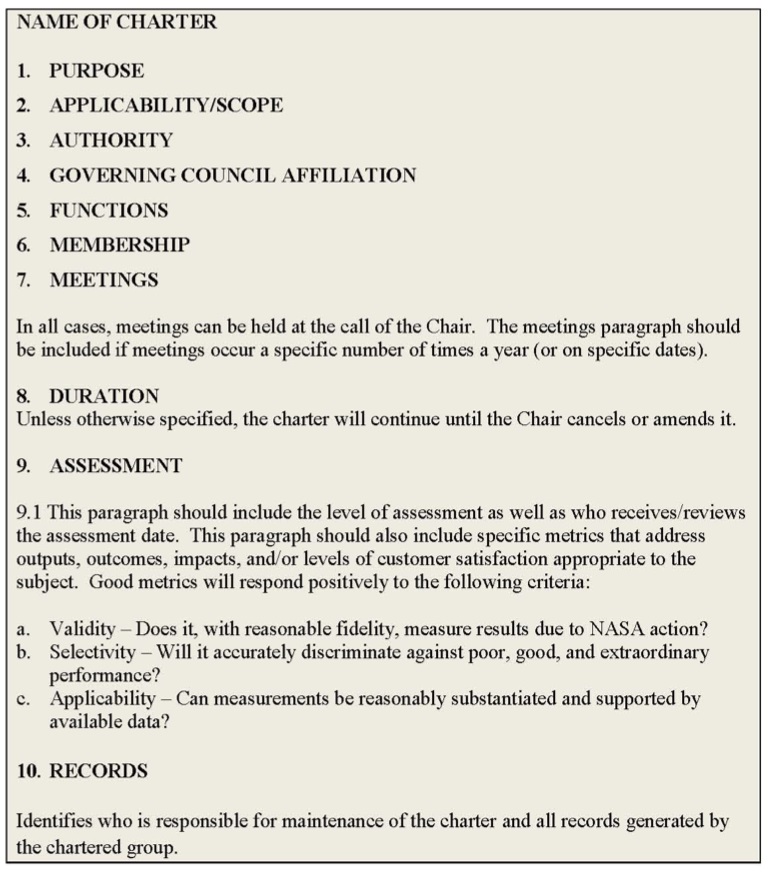
Figure 3-5. Agency-level Charter Standard Paragraphs
| TOC | ChangeLog | Preface | Chapter1 | Chapter2 | Chapter3 | Chapter4 | Chapter5 | AppendixA | AppendixB | AppendixC | AppendixD | AppendixE | AppendixF | ALL | |
| | NODIS Library | Organization and Administration(1000s) | Search | |
This document does not bind the public, except as authorized by law or as incorporated into a contract. This document is uncontrolled when printed. Check the NASA Online Directives Information System (NODIS) Library to verify that this is the correct version before use: https://nodis3.gsfc.nasa.gov.